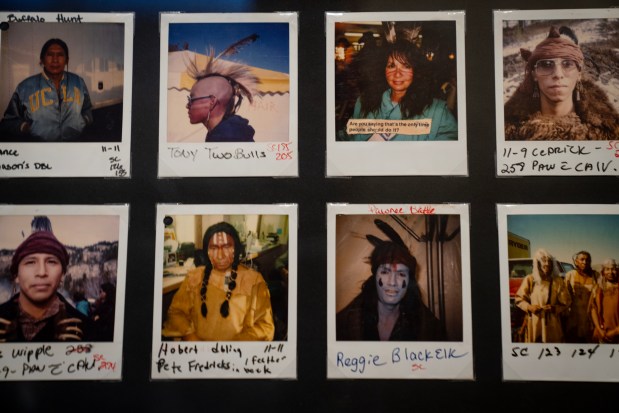We think some businesses will last forever. We assume a place that’s been around for 80 years will stick around for 80 more. But what happens when you learn that they’re about to disappear?
Maybe you regret you didn’t go there more often, or you ask, “Why can’t they simply get someone to buy the business?” You go through the stages of grief. Or you take action in the only way you know how.
The closure of classic Chicago bakeries hits me hard. In 2017, the Swedish Bakery in Andersonville announced it would close after 88 years in business. I lived three blocks away and would go there for limpa bread, butter cookies, almond tarts, semla and paczki. On weekend mornings, customers took a number and ogled the infinite array of treats displayed in the U-shaped counter as they waited. People from across the Chicago region stood shoulder-to-shoulder during the holidays to pick up preorders, plus grab last-minute items that caught their eyes. I faithfully ordered their Andersonville Coffee Cake whenever guests stayed over or if I was headed to a family gathering. The loss of that coffee cake, with its cardamom-scented dough swirled with cinnamon and almond filling, felt tragic.
I did what I know how to do: bake. I bought a final coffee cake from the Swedish Bakery before they closed. I dissected it and took notes. It’s more of a sweet bread than a cake. I tasted the warm flavor of cardamom in the soft, yeasted dough. I peeled apart the layers and tried the filling on its own: buttery, moist, with subtle flavors of cinnamon and almond extract. But I needed an engineering degree to decipher the twists and swirls in this flat, circular coffee cake.
After that analysis, I hit my stash of recipes. Starting with a simple enriched dough I use for cinnamon rolls, I added cardamom until I got the right balance of flavor. Instead of a classic cinnamon roll filling of butter, sugar and cinnamon, I toned down the spice and added some almond extract. In the first bake, I got the dough right, but the filling needed work. I added some almond flour to the filling, which kept it moist and added richness. I dialed back the spices so the cinnamon, almond and cardamom sang in harmony.
I struggled to get the exact swirl pattern of the original, so I defaulted to a technique used for a babka. I spread the filling on a large rectangle of dough, rolled it up like a cinnamon roll and cut the log down the center going the long way. Then I turned the dough so the long lines of filling faced upward and twisted the dough while keeping that filling facing up. Finally, I brought the long twist of dough into a circle, doing my best to make it look like an infinite twist. Although this version didn’t look exactly like the original, it resulted in the same effect and the flavor was spot on.
Martin Sorge’s version of the Andersonville Coffee Cake from the now-closed Swedish Bakery at his home on Jan 22, 2024.
My homemade Andersonville Coffee Cake took the place of the Swedish Bakery’s version, appearing at family gatherings and on the table when we host guests. I adapted it into a babka when I appeared on “The Great American Baking Show,” decorating the top with royal icing Dala horses and the colors of the Swedish flag in honor of the Swedish Bakery and its former neighborhood.
Then Dinkel’s Bakery in Lakeview closed in spring 2022 after a century in business. Where would our family order half a dozen stollen each Christmas? As soon as I heard the news, I started working on the recipe. But that’s a story for another time.
Andersonville Coffee Cake Recreation
Want to bake like your favorite bakery? Start by weighing your ingredients with a scale since measuring by weight is the most accurate way to bake. You can bake this on a baking sheet or in a 10-inch springform pan.
Yield: Makes one 10-inch round coffee cake, serves 8-10.
Ingredients:
For dough
50 grams (1/4 cup) sugar
450 grams (3 3/4 cups) bread flour
1 1/2 teaspoons ground cardamom
1 1/2 teaspoons kosher salt
2 1/4 teaspoons (one ¼ ounce packet) instant yeast
14 grams (2 tablespoons) dry milk powder
75 grams (5 tablespoons) unsalted butter, melted and cooled slightly
240 grams (1 cup) whole milk, at room temperature
1 teaspoon vanilla extract
1 large egg, at room temperature
For filling
100 grams (1 cup) almond flour or almond meal
1 tablespoon all-purpose flour or bread flour
125 grams (1/2 cup plus 1 tablespoon) sugar
1 1/2 teaspoons ground cinnamon
1/4 teaspoon kosher salt
1/2 teaspoon almond extract
85 grams (6 tablespoons) unsalted butter, melted and still warm
For glaze
50 grams (1/4 cup) sugar
50 grams (about 1/4 cup) water
Prep time: Around 4 hours, including rising time
Directions
To make the dough:
1. Place the sugar, bread flour, cardamom, salt, yeast and dry milk powder into the bowl of a stand mixer and whisk by hand to combine.
2. Add the melted butter, whole milk, vanilla extract and egg to the bowl and fit the mixer with a dough hook.
3. Mix on the lowest speed until thoroughly combined, about 2 minutes. Turn the speed to medium-low and continue to mix for another 10 minutes or so until a smooth dough forms, which should have cleaned the sides and bottom of the bowl. (The dough should be on the sticky side, so do not be tempted to add more flour.)
*If you don’t have a stand mixer, mix the ingredients in a large bowl with a wooden spoon until well combined. Let sit for 20 minutes for the flour to absorb the liquid, then knead by hand until you have a smooth dough, about 10 minutes. This dough is sticky, but try not to add any more flour, or the final product will be dense and dry.
4. Remove the dough and spray the bowl with nonstick spray or lightly oil it. Form the dough into a ball and place it back into the prepared bowl and cover the bowl.
*Same-day proof: If you want to bake this the same day, let the dough rise until doubled in size, usually 60 to 90 minutes total, then proceed with the filling step and second proof.
*Overnight proof: If you want to bake this the next day, which I usually do, let the dough sit at room temperature for 30 minutes, then place the covered bowl in the refrigerator for at least six hours, up to 18.
To make the filling:
After the first proof, make the filling just before you shape the coffee cake so it stays spreadable.
5. In a medium bowl, combine the almond flour, all-purpose or bread flour, sugar, cinnamon and salt. Whisk to combine.
6. Add the almond extract to the melted butter and stir to combine. Add the butter to the dry ingredients and stir until well combined, moist and spreadable.
To shape the dough:
7. When proofing is complete, on a lightly greased counter (I add a few drops of oil to a paper towel and rub that across the counter), tip out your dough and shape it into a rough rectangle.
8. Roll the dough into an 18-by-14-inch rectangle as evenly as you can, with the long edge facing you.
9. Using a rubber spatula, spread the filling evenly and carefully, leaving about a 1/2 inch across the top with no filling. Starting with the long edge closest to you, roll the dough tightly up and away from you. Pinch and seal the seam. Do not seal the open sides.
10. Gently shape the dough so the cylinder has a relatively even diameter. If the dough is very soft and seems hard to work with, place the dough on a sheet pan and refrigerate it for 20 minutes.
11. With a sharp, serrated bread knife, slice the dough in half the long way. You should have two long half-cylinders. Tip them so the filling faces up in long stripes. Start the twist crossing the two halves over in the middle. Starting from the middle and working outward, lift and twist, keeping the filling facing upward. Continue along the entire length of the cylinder.
12. Gently curve the twist into a ring. You may have to gently tug the dough to coax it into a twisted ring shape. Try to seal the ends together underneath one of the twists so the ring looks continuous.
13. Line a baking sheet or a 10-inch springform pan with parchment paper and carefully slide the dough onto the prepared pan.
14. Second proof: Preheat the oven to 375°F with a rack in the middle of the oven. Cover the dough loosely with plastic wrap and let it rise until it looks very puffy and it holds an indentation when you poke it lightly, for 30 to 50 minutes at room temperature (proofing time depends on the temperature of your kitchen).
To make the glaze:
15. Combine the water and sugar in a small saucepan and bring it to a full boil, stirring until the sugar dissolves. Turn off the heat and let the glaze cool until the cake is baked.
To bake:
16. When the dough has proofed and the oven is preheated, bake it on the middle rack for 33-38 minutes. Check the bread after 30 minutes, and if the top looks too dark, you can loosely place a piece of aluminum foil on top to prevent it from over-browning. The coffee cake is done when it looks deeply golden brown and the internal temperature is 190°F in the center of the thickest part and the cake.
17. Remove the cake from the oven (and remove the outer rim of the springform pan, if using). Brush the top and sides of the cake with the glaze (you might not need all of the glaze). Let the coffee cake cool for 20 minutes on the pan, then transfer it and the parchment onto a wire rack to cool completely.
This cake is best the same day or the following day but will last up to four days, covered at room temperature.
Martin Sorge is a freelance writer.
Big screen or home stream, takeout or dine-in, Tribune writers are here to steer you toward your next great experience. Sign up for your free weekly Eat. Watch. Do. newsletter here.





